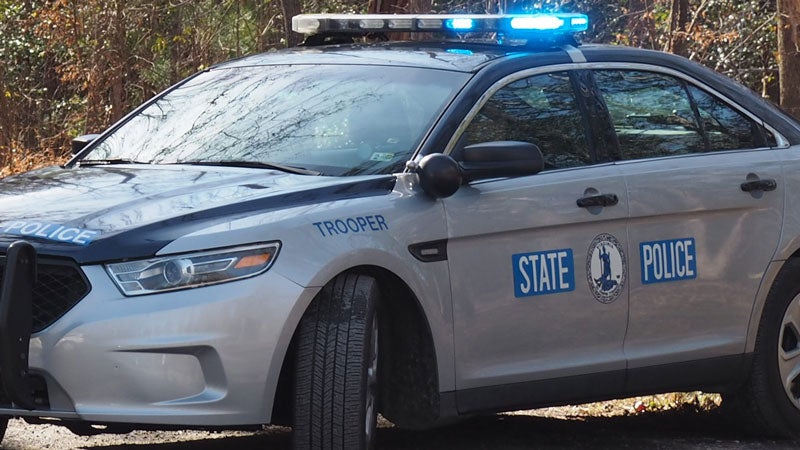Special education needs rising in Isle of Wight
Published 5:38 pm Wednesday, May 15, 2024

- This chart, created by Isle of Wight County Schools, shows the number of special education students divisionwide having increased 22% since 2016. (Image courtesy of IWCS)
Isle of Wight County Schools’ share of students in special education is on the rise.
According to IWCS Special Education Director Patricia Magner, 853, or 15%, of the division’s 5,594 students qualified in 2023 for an Individualized Education Plan, or IEP, under the federal Individuals with Disabilities Education Act.
The total reflects a seven-year 22% increase from the 699 who qualified in 2016. The count doesn’t include the number of students who qualify for accommodations, but not an IEP, under Section 504 of the Rehabilitation Act, a federal civil rights law, Magner said.
Magner attributes the uptick to new housing developments in the county’s northern end. Isle of Wight is the sixth fastest-growing county statewide, according to population estimates by the University of Virginia’s Weldon Cooper Center, which showed a 6% increase from the 38,606 counted during the 2020 Census to 40,873 as of mid-2023.
Benn’s Grant, a 776-home development off Benns Church Boulevard, broke ground in 2015. More than 500 homes are now built and sold and an apartment phase, dubbed The Westerly at Benn’s Grant, is currently leasing the remaining 240 units. Another, dubbed The Crossings at Bartlett Station, broke ground in 2021 on its residential phase, which calls for up to 240 condominium units and 52 single-family homes. Both feed into Westside Elementary and Smithfield High School, which saw their special education populations grow 21% and 42%, respectively, between 2016 and 2023, according to Virginia Department of Education data for IWCS.
“We’ve seen a lot of movement into the county; the developments have brought many families and we’ve felt that impact,” Magner told the School Board on May 9.
More are on the way. Smithfield’s Town Council approved an 812-home development dubbed Mallory Pointe in 2021 for the 500-acre Mallory-Scott Farm off Battery Park Road, and in 2023, approved the 267-home Grange at 10Main mixed-use community slated for 57 acres at the western edge of the town’s historic district.
Some of the data doesn’t correlate with the buildout. Windsor Elementary, which has just over 600 students, saw its share of those in special education rise 86% from 65 in 2016 to 121 in 2023, despite none of the in-progress developments being located in its attendance zone. Carrollton Elementary, which pulls students from Benn’s Grant and The Crossings, saw its share of special education students drop 13% from 88 in 2016 to 76 in 2023. County officials estimate roughly 25% of all permits for new homes occur outside of planned subdivisions.
Neighboring Surry County, which isn’t seeing the same population explosion as Isle of Wight, has also seen its share of special education students increase. Special education students accounted for 14% of Surry’s enrollment in 2009 and had increased to 20%, or one in five, as of 2022, according to data Surry Superintendent Serbrenia Sims shared that year.
Regardless of where Isle of Wight’s influx is coming from, it’s having a cost. According to Magner, the division’s special education staffing has grown only 16% since 2017. IWCS Superintendent Theo Cramer, in his 2024-25 budget proposal, requested an additional special education teacher and instructional assistant for Smithfield High, Smithfield Middle School and Westside for the 2024-25 school year. But School Board Chairman Jason Maresh contends the $2.7 million increase in operating funds offered by the county won’t be enough to add any new employees.
In a May 8 email to the Board of Supervisors, which has the final say over what local funding its school system receives, Maresh contended just under $1 million of the proposed local funding increase would have to go toward continuing to pay existing employees at the 2% higher salaries the School Board and supervisors each approved in December. The state’s 2024-26 biennial budget mandates an additional 3% raise be given starting July 1.
In addition to teachers and instructional assistants, the division must keep on staff several “clinicians,” a group of employees that includes speech pathologists, psychologists, social workers and vision, hearing, occupational and physical therapists to identify and work with students diagnosed with disabilities.
“Currently we have students that require all of those services in our division,” Magner said.
She told the School Board she has two clinicians who are being paid $10,000 less than neighboring school divisions, and have received offers to leave, plus a vacancy. If the two clinicians leave, Magner said she would have to outsource their jobs to a third-party vendor at an even higher cost than giving her existing employees raises.
“It will cost me $300,000 with a vendor to replace those two people,” she said.
Divisionwide, the prevalence of students diagnosed with autism increased 17% from 2016 to 2023 according to the state data. Developmental delays at the elementary school level are up 49%. Intellectual disabilities are down 4% but students deemed to have multiple disabilities are up 25%.
Teaching a student deemed to have multiple disabilities, one of which must be cognitive to meet the state’s definition of the term, requires specialized licensing, class size caps and multiple instructional assistants per classroom, Magner said. Self-contained special education classrooms are capped at eight students, though the three additional special education teachers and three instructional assistants requested for 2024-25 are intended for inclusion classrooms, where students with disabilities learn alongside their non-special-education peers.




